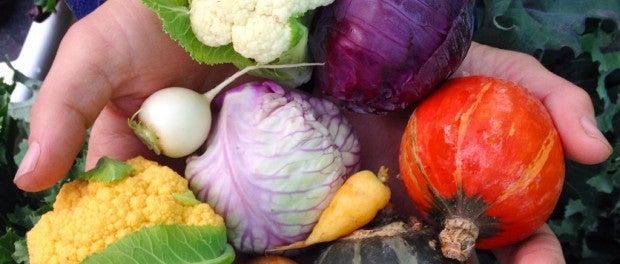Funding for Community Food Projects

USDA’s National Institute of Food and Agriculture Announces up to $8.6 Million in Available Funding for Community Food Projects
The U.S. Department of Agriculture’s (USDA) National Institute of Food and Agriculture (NIFA) has announced up to $8.6 million in available funding to assist low-income individuals and communities in developing local and self-reliant food systems. This funding is available through NIFA’s Community Food Projects Competitive Grant Program (CFP), authorized by the 2014 Farm Bill.
“Community food projects enable low-income communities to address food insecurity and hunger by creating and strengthening local food systems,” said NIFA Director Sonny Ramaswamy. “Recent USDA data shows that because of programs like this, we are making progress addressing food shortages, decreasing food insecurity and promoting healthy diets and nutrition education.”
The USDA report, Household Food Security in the United States, documents the continued decline in the estimated percentage of U.S. households that were food insecure in 2015 to 12.7 percent from a high of 14.9 percent in 2011.
The primary goals of Community Food Projects are to meet the food needs of low-income individuals. Projects will assess strengths and establish connections among existing food systems, resulting in improved food systems that support self-reliance. Grants are intended to help eligible, private, nonprofit entities in need of a one-time installment of federal assistance to establish and carry out multipurpose community food projects. Projects may be funded from $10,000 to $400,000 for up to 48 months. All grants require a dollar-for-dollar match in resources.
2017 applications are due Nov. 30, 2016. See the request for applications for more details.
NIFA will host a free informational webinar for interested applicants on Oct. 13 at 2:00 p.m. EST.
Previously funded CFPs include the Molokai Food Hub, which addresses the food insecurity of its 7,000-person community on the island of Molokai, Hawaii. The food hub provides outreach and education on buying, preparing and eating local, fresh foods as well as training for island farmers. Another project, Common Market Food(link is external), in Philadelphia, works to ensure that the food needs of all residents in the metropolitan area are met and that local farmers have a viable alternative to the mainstream food distribution network. NIFA recently awarded $8.6 million in FY16 CFP awards. More information can be found on the NIFA website.
Funding for Community Food Projects is an important part of USDA’s Know Your Farmer, Know Your Food initiative (KYF2), which works to strengthen and support local and regional food systems. More information on the initiative, including the KYF2 Compass, an interactive map of CFP and other federally-supported local food projects, can be found at: www.usda.gov/knowyourfarmer.
NIFA invests in and advances innovative and transformative research, education and extension to solve societal challenges and ensure the long-term viability of agriculture. NIFA support for the best and brightest scientists and extension personnel have resulted in user-inspired, groundbreaking discoveries that are combating childhood obesity, improving and sustaining rural economic growth, addressing water availability issues, increasing food production, finding new sources of energy, mitigating climate variability and ensuring food safety.
USDA has significantly expanded its efforts to improve access to safe, healthy food for all Americans and support the health of our next generation, learn more online in USDA’s Growing a Healthier Future, improving Nutrition and Access to Healthy Food for Americans(link is external) Medium chapter. Between 2009-2005, USDA has invested over $1 billion in more than 40,000 local food businesses and infrastructure projects. Additional investments were made in 2016. This funding for community food projects is an important part of that effort. Additional information about USDA efforts to support local and regional food systems, including by increasing SNAP access at farmers markets, can be found in the New Markets, New Opportunities(link is external) Medium chapter.



 Your Privacy Choices
Your Privacy Choices
Leave a comment